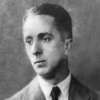Norman Rockwell

Norman Rockwell
Norman Perceval Rockwellwas a 20th-century American author, painter and illustrator. His works enjoy a broad popular appeal in the United States for their reflection of American culture. Rockwell is most famous for the cover illustrations of everyday life he created for The Saturday Evening Post magazine over nearly five decades. Among the best-known of Rockwell's works are the Willie Gillis series, Rosie the Riveter, The Problem We All Live With, Saying Grace, and the Four Freedoms series. He also is...
NationalityAmerican
ProfessionPainter
Date of Birth3 February 1894
CityNew York City, NY
CountryUnited States of America
A face in the picture would bother me, so I'd rub it out with the turpentine and do it over.
Things aren't much wilder now, I don't think, than they were back then. Of course I just read about all the goings-on now. Ha.
It was a pretty rough neighborhood where I grew up The really tough places were over around Third Avenue where it ran into the Harlem River, but we weren't far away.
I would take the wrong approach for a teacher, I guess... But there was always someone in a class who would raise an objection to my way. They'd want to get into an argument with me. And I was no good at arguing. So I figured if that was what teaching was like, I better leave it to someone who knows how to maneuver an argument. I'd stick to what I knew-painting. So I didn't stay long at the Los Angeles County Artists School.
Everyone in those days expected that art students were wild, licentious characters. We didn't know how to be, but we sure were anxious to learn.
I talk as I sketch, too, in order to keep their minds off what I'm doing so I'll get the most natural expression I can from them. Also, the talking helps to size up the subject's personality, so I can figure out better how to portray him.
It wouldn't be right for me to clown around when I'm painting a president.
Some people have been kind enough to call me a fine artist. I've always called myself an illustrator. I'm not sure what the difference is. All I know is that whatever type of work I do, I try to give it my very best. Art has been my life.
When I go to farms or little towns, I am always surprised at the discontent I find. And New York, too often, has looked across the sea toward Europe. And all of us who turn our eyes away from what we have are missing life.
The '20s ended in an era of extravagance, sort of like the one we're in now. There was a big crash, but then the country picked itself up again, and we had some great years. Those were the days when American believed in itself. I was happy and proud to be painting it.
I didn't know what to expect from a famous movie star; maybe that he'd be sort of stuck-up, you know. But not Gary Cooper. He horsed around so much... that I had a hard time painting him.
Eisenhower had about the most expressive face I ever painted, I guess. Just like an actor's. Very mobile. When he talked, he used all the facial muscles. And he had a great, wide mouth that I liked. When he smiled, it was just like the sun came out.
How will I be remembered? As a technician or artist? As a humorist or a visionary?
Right from the beginning, I always strived to capture everything I saw as completely as possible.